Part of a series of articles titled Alaska Park Science Volume 20 Issue 1 - Parks as Proving Grounds.
Article
Repeat Photography: A Visually Compelling Tool for Documenting Natural Resource Change

Photos courtesy of F. La Roche, Library and Archives Canada, C-28645 and R.D. Karpilo Jr./S.C. Venator
The breathtaking beauty of Alaska inspires visitors and residents alike to reach for their cameras and document the view before them. In that euphoric moment, it feels like photography was specifically invented to capture and preserve our memories of extraordinary places like Alaska’s national parks. The early explorers, scientists, and visitors who ventured to Alaska around the turn of the 20th century felt the same urge that we do to document and share their experiences. Beginning in the late 1800s, cameras rapidly became standard equipment for expeditions to Alaska. Many of the early explorers and scientists recognized the utility of photography for documenting natural and cultural resources and as a result, thousands of high-quality images were produced during this time. Pioneer photographers captured Alaska on film at the turn of the century. A few of these early photographers recognized the value of systematically revisiting sites and using repeat photography to create long-term records of natural resource change.

Left to right, John Muir, H.P. Cushing, R.L. Casement (on roof), C.A. Adams, J.H. McBride, and H.F. Reid.
Photo was taken by J.F. Morse. Photo courtesy of Johns Hopkins University Sheridan Libraries
Geophysicist Harry Fielding Reid (pictured in Figure 1) was one of the early proponents of repeat photography. Reid made expeditions to Glacier Bay in 1890 and 1892 and, during these visits, he quickly recognized the effectiveness of repeat photography for monitoring landscape changes in Alaska. In 1896 Reid wrote:
All photographs of the end of a glacier are useful, especially those taken from a station easily accessible and easily described; photographs taken from the same station at a future date will show what changes have taken place in the interval. (Reid 1896: 867)
In the 125 years that have elapsed since Reid wrote those words, scores of researchers and photographers have used repeat photography techniques to leverage the treasure trove of historical photos to document and study the past century of environmental changes in Glacier Bay and many other areas currently managed by the National Park Service (NPS).
It is important to understand how the natural resources of Alaska’s national parks have changed during the past century and how the ecosystems and landscapes of the parks are responding to drivers such as climate change, human visitation, and development. This information and data are critical for effective park management and public safety. It is well established that repeat photography is an effective method for qualitatively and quantitatively documenting and evaluating complex changes in natural and cultural resources over time (Jorgenson et al. 2006, Karpilo and Venator 2015, Molnia 2010, Webb et al. 2010). Additionally, numerous studies have demonstrated the value and efficiency of repeat photography as a tool for studying landscape-scale changes and communicating the complex effects of climate change in national parks to diverse audiences including park visitors, resource managers, and scientists (Adema et al. 2007, Fagre and McKeon 2010, Karpilo et al. 2006, Molnia et al. 2004, Molnia et al. 2007, Roland and Stehn 2013).
Repeat Photography Methods
Over the past two decades, I have been fortunate to conduct repeat photography projects in Denali National Park and Preserve, Gates of the Arctic National Park and Preserve, Glacier Bay National Park and Preserve, and Klondike Gold Rush National Historical Park. During these projects, my project partners and I have relocated and repeated hundreds of historical photos and developed a well-tested repeat photography project workflow and protocol. My approach is a result of the combination of the application of techniques found in literature, guidance and support from other experts, and an abundance of trial and error. In general, a repeat photography project can be divided into five phases: (1) historical photo collection, (2) project planning, (3) photography fieldwork, (4) photo pair assembly, and (5) photo analysis.
Phase 1: Historical Photo Collection
This step consists of visiting various archives and collecting historical images depicting the targeted subjects (glaciers, vegetation, or other resources) in the area of interest. To make relocation possible, the photos must include identifiable features, such as mountain peaks, rock outcrops, or other static landmarks, that are unlikely to significantly change in the time since the photo was made. It is also beneficial to gather additional material such as photographer field notes, journals, personal letters, maps, and publications that may assist in finding photo locations and provide context for the images. I have collected thousands of historical images made in Alaska’s national parks from the following sources: Alaska NPS park archives, Library and Archives Canada, Library of Congress, National Archives, National Snow and Ice Data Center, Royal BC Museum, University of Alaska Fairbanks, University of California Riverside, University of Washington, U.S. Geological Survey, Yukon Archives, and various private photo collections.
Phase 2: Project Planning
The second phase is evaluating and prioritizing potential photos based on criteria relevant to the project goals. Examples of prioritization criteria are: quality of original photograph, depiction of natural resources (or other subject of interest), seasonality of original photograph (most projects have a preference for snow-free summer images), photo location access and safety, and repeatability (Karpilo and Venator 2015). Once the high-priority photos are selected, the locations of the photo sites should be identified and mapped. Park staff, shuttle bus drivers, pilots, local residents, or anyone with intimate knowledge of the field area should be consulted to help pinpoint photo locations and identify landmarks visible in the images. Using Google Earth, GIS data, and topographic maps, it is often possible to digitally simulate the view of the historical photo or use triangulation to determine a general location of the photo site. Other project planning tasks include printing field copies of photos and planning fieldwork transportation and logistics.
Phase 3: Photography Fieldwork
The third phase involves visiting high-priority historical photo locations and making modern images. One technique that has served me well in finding photo locations in the field is the “think like a photographer technique,” in which I look at the local area and ask myself: “If I were a photographer, where would I want to go to make a photo?” This simple technique often leads to prominent overlooks, hills, or other obvious photo-taking locations. Once the general photo location is found, the camera position is fine-tuned by moving around and comparing the apparent position of key temporally stable foreground and background elements, such as identifiable rocks, ridges, and peaks with the position of those same features in the printed field photo (Figures 2 and 3). After making a modern repeat of the photo, a GPS is used to record the latitude, longitude, and elevation of the photo stations (Figure 4). Additionally, the camera height and bearing for each photo is recorded. Reference photos of each photo site should be made to aid in finding the site in the future. To extend the utility of the photo station, a high-resolution, 360-degree panoramic image should be made at each photo location. For more detailed descriptions of repeat photo-monitoring methods, see Hall 2002, Jorgenson et al. 2006, Karpilo 2009, Karpilo and Venator 2015, and Webb et al. 2010.

Photo courtesy of R.D. Karpilo Jr.
Figure 3 (right). June 30, 2011, Ron Karpilo and David Tomeo locating and repeating a 1919 photograph taken by U.S. Geological Survey geologist Stephen R. Capps in the East Fork Toklat Valley in Denali National Park and Preserve. Photo by Lacy Karpilo

Figure 4 (right). August 9, 2019, Chris Allan and Sarah Venator searching for a photo location in Gates of the Artic National Park and Preserve.
Photo courtesy of R.D. Karpilo Jr.
Phase 4: Photo Pair Assembly
To assemble the photo pairs, the historical and modern photos are imported into image editing software as separate layers. The historical photo is overlaid on the repeat photo and made partially transparent and then the historical photo is rotated and resized (with the aspect ratio locked so the image is not distorted) to best align with the repeat photo. The modern photograph is then cropped to the field of view of the historical photograph.
Phase 5: Photo Analysis
The photo pairs are then examined and the notable changes summarized. Each person who views a photo pair, views it through the lens of their own experience and expertise. Therefore, it is often beneficial to consult with specialists from different fields. Several individuals can view the same photo pair and they may all notice different details and nuances that otherwise would have gone undetected. Depending on the objectives of the project, the pairs can be analyzed to identify variations in vegetation density and distribution, ecosystem composition and connectivity, fluvial morphology, glacier dynamics, geomorphic change, anthropogenic impacts, and other changes. Contingent on the quality of the images and precision of the repeat, both qualitative and quantitative analyses are possible. Brodie and others (2019) provides a good example of the use of photo pairs to analyze land-cover change in Denali National Park. See Webb and others (2010) for other examples of analysis techniques.
Discussion
Repeat photography is a unique method of scientific investigation because of the broad range of subjects that can be studied and the fact that the resulting products are interesting and understandable for both children and subject-matter experts. Projects can use repeat photography as the primary investigative method or it can easily be added as a complimentary component to other projects or fieldwork. Repeat photography is a low-cost tool, requiring only basic camera and GPS equipment and skills. The low technical and financial barriers to entry make repeat photography a good fit for citizen science projects and field courses (Tomeo 2013).
The photo pairs or series that are produced are useful for illustrating and analyzing changes over time in a wide range of physical or cultural resources. The resulting data can assist in identifying specific features or processes that may require more intensive monitoring and research and can serve as a valuable tool for education, outreach, and resource management. The high-resolution photo pairs and well-documented photo stations serve as a baseline and can be easily revisited and rephotographed to detect and monitor future changes in park resources.
The significant communication and educational value of repeat photo pairs is apparent in how quickly viewers comprehend the information being presented and are often drawn in to learn more about subjects that are complex or difficult to conceptualize. The adage that “a picture is worth a thousand words” certainly applies and one could argue that a photo pair or series has a multiplying effect making them worth much more. Repeat photography satisfies an innate human yearning for time travel. On a basic level, photo pairs serve as virtual time machines that afford researchers and viewers that desired ability to transcend time and see a snapshot of how things used to be.
Select Alaska National Park Repeat Photography Links
Klondike Gold Rush National Historical Park
Glacier Bay National Park and Preserve
Gates of the Artic National Park and Preserve
Kenai Fjords National Park
Denali National Park and Preserve
Examples of Repeat Photography from Alaska Parks
Panoramic view of the terminus of Reid Glacier in Glacier Bay National Park and Preserve.


Left image
Reid Glacier, June 12, 1899, G.K. Gilbert, U.S. Geological Survey.
Right image
Reid Glacier, June 27, 2004, R.D. Karpilo Jr.
View north-northwest of Grand Pacific glacier (center) and Margerie glacier (left) in Tarr Inlet, Glacier Bay National Park and Preserve.
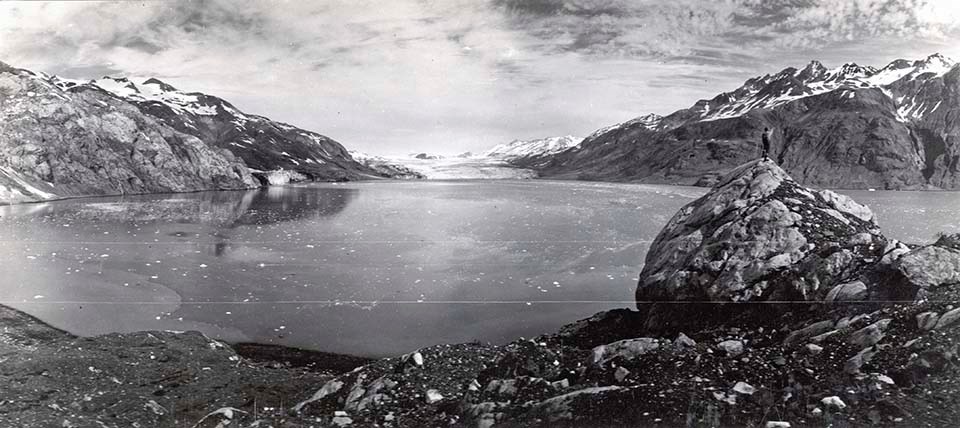
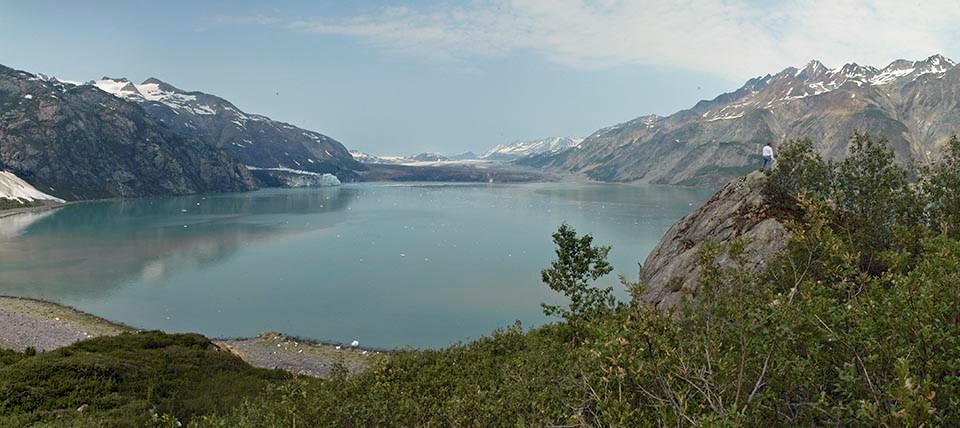
Left image
Taar Inlet, Summer 1931, C.W. Wright, U.S. Geological Survey.
Right image
Taar Inlet, June 26, 2004, R.D. Karpilo Jr.
View south from a small hill north of the park road near Polychrome Pass, Denali National Park and Preserve.


Left image
Polychrome Pass, July 18, 1916, S.R. Capps, U.S. Geological Survey.
Right image
Polychrome Pass, June 26, 2011, R.D. Karpilo Jr.
Panorama of the East Fork Toklat River and Glacier, Denali National Park and Preserve.


Left image
East Fork Toklat River, August 22, 1919, S.R. Capps, U.S. Geological Survey.
Right image
East Fork Toklat River, June 30, 2011, R.D. Karpilo Jr.
U.S. Geological Survey geologist Stephen R. Capps’ field party crossing into Windy Creek from the Sanctuary River Valley, Denali National Park and Preserve.
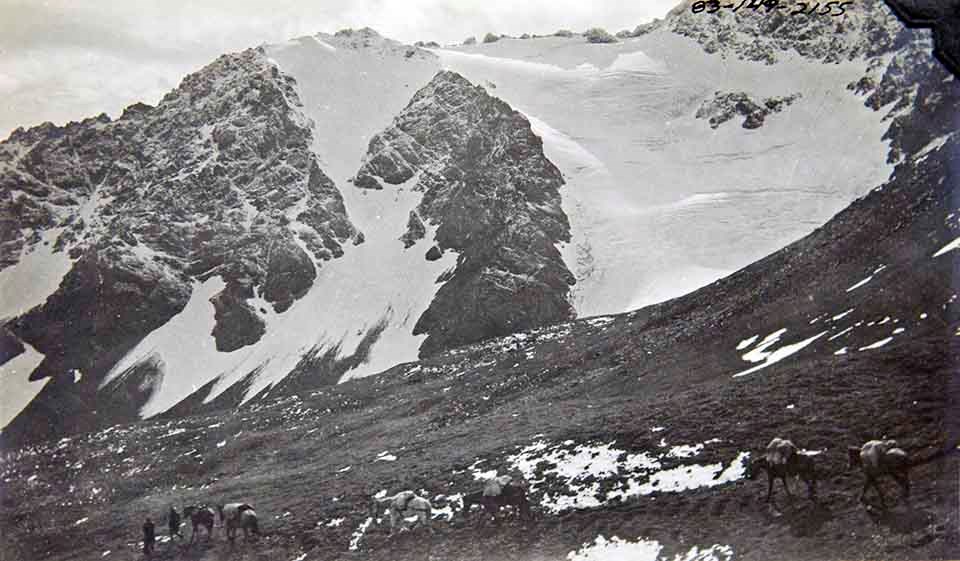
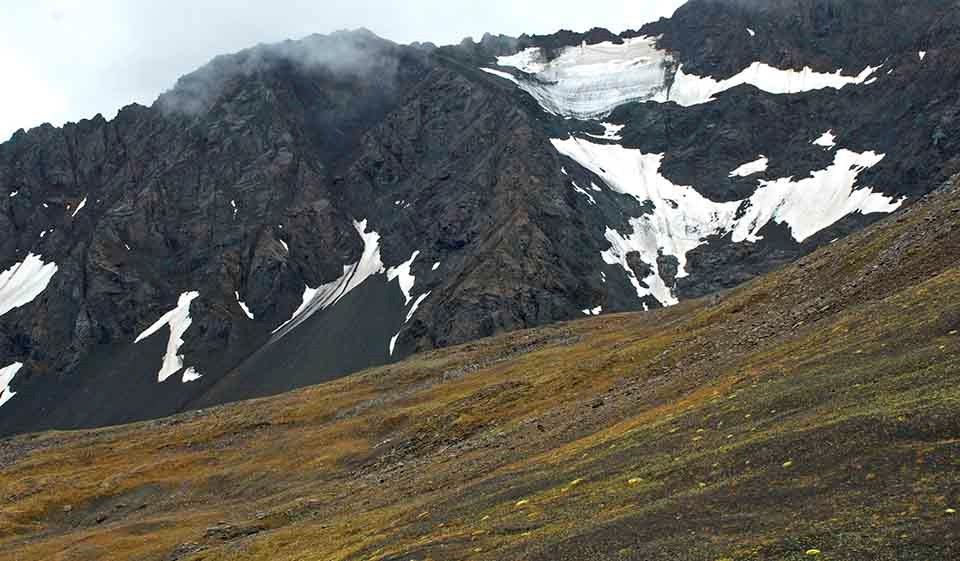
Left image
Windy Creek, August 31, 1919, S.R. Capps, S.R. Capps
Credit: Papers #83-149-2155, APR Collections, University of Alaska Fairbanks.
Right image
Windy Creek, July 30, 2011, R.D. Karpilo Jr.
View north of Nutuvukti Lake from small peak between the lake and Kobuk River in Gates of the Arctic National Park and Preserve.
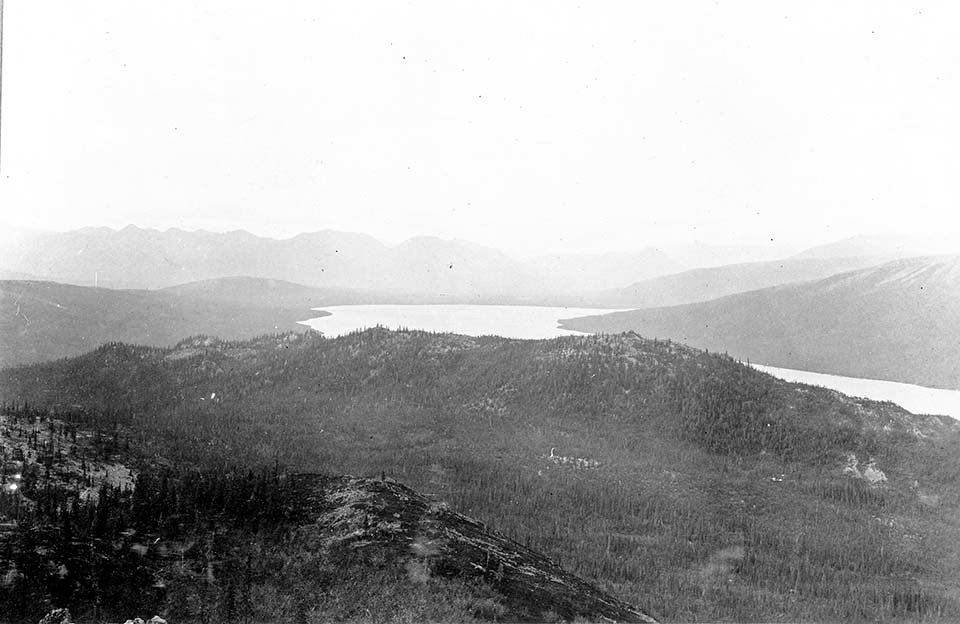
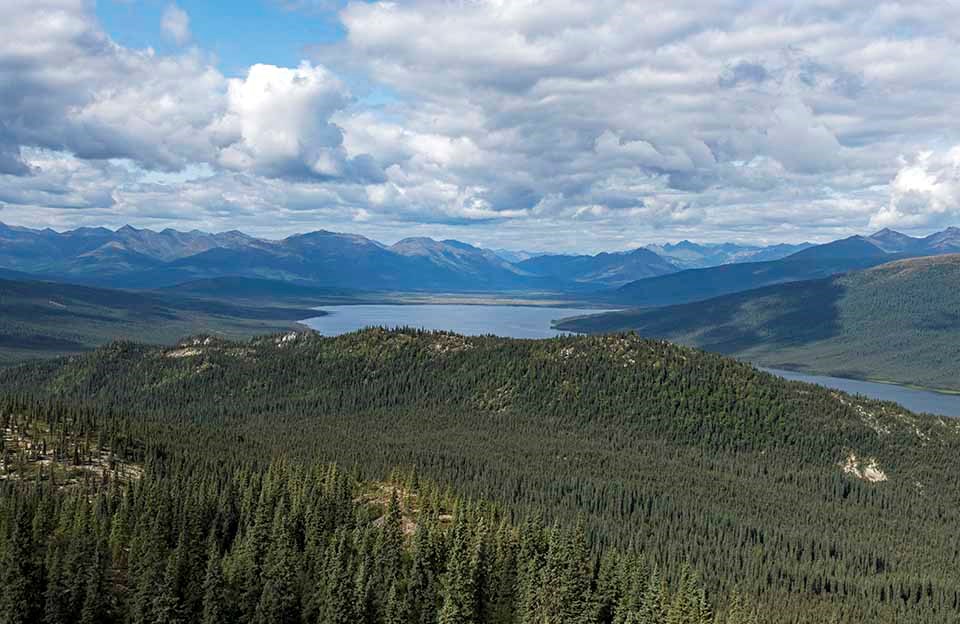
Left image
Nutuvukti Lake, August 13, 1901, W.C. Mendenhall, U.S. Geological Survey.
Right image
Nutuvukti Lake, August 9, 2019, R.D. Karpilo Jr.
View north from Swan Island, Walker Lake, Gates of the Arctic National Park and Preserve.
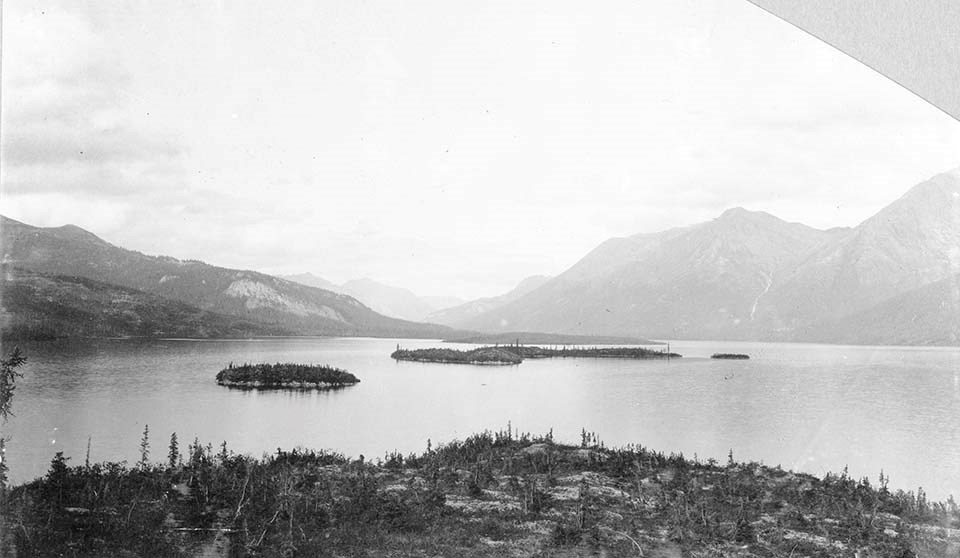
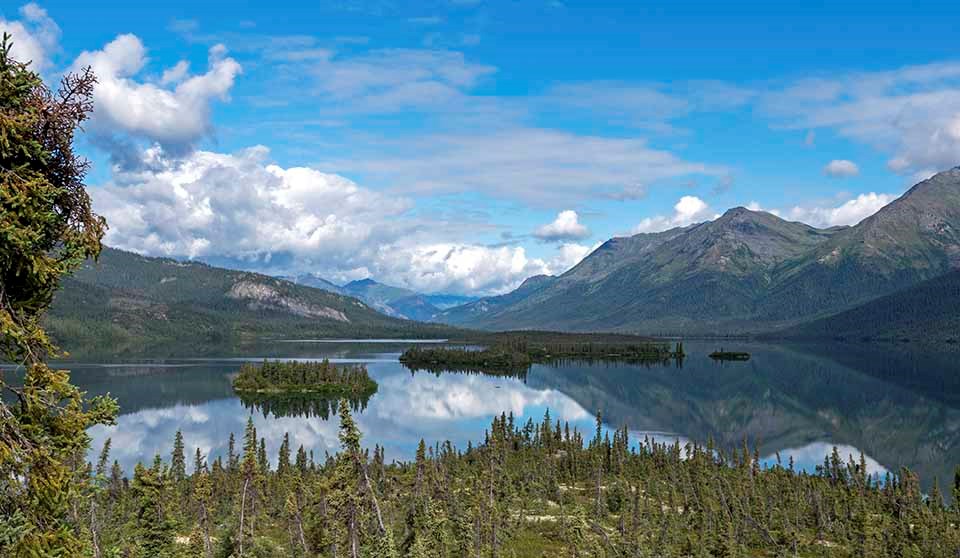
Left image
Walker Lake, August 12, 1901, W.C. Mendenhall, U.S. Geological Survey.
Right image
Walker Lake, July 12, 2018, R.D. Karpilo Jr.
View north of the waterfront in Skagway.
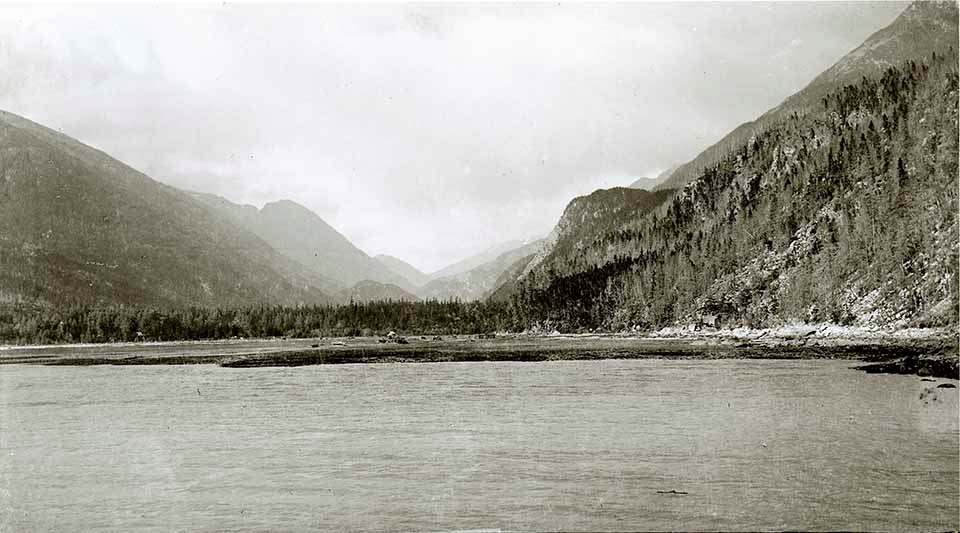
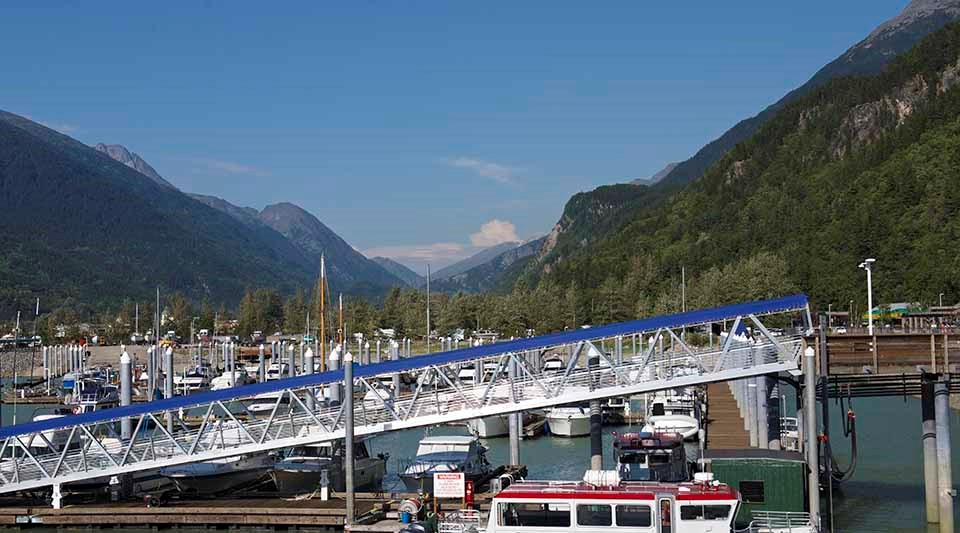
Left image
Skagway Harbor, July 26, 1897, F. La Roche, Library of Congress, LC-USZ62-122304.
Right image
Skagway Harbor, August 15, 2013, R.D. Karpilo Jr. and S.C. Venator
View to the south of the East Fork Skagway River and train on the White Pass and Yukon Route Railway rounding the curve at Rocky Point, Klondike Gold Rush National Historical Park.
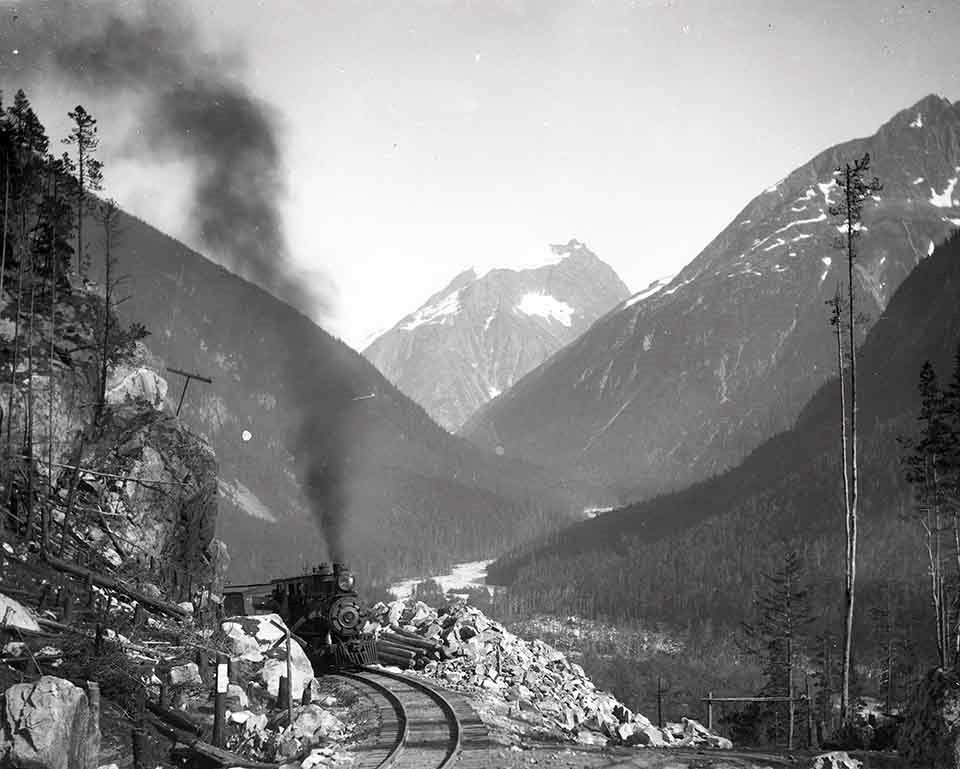
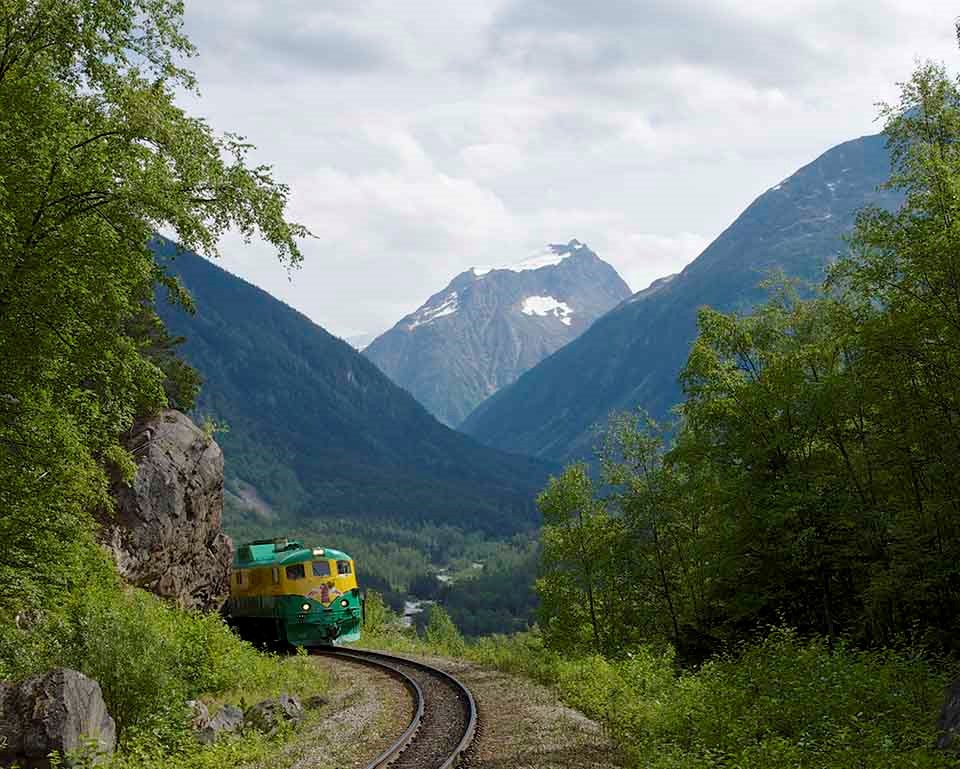
Left image
White Pass, August 1899, H.C. Barley, Yukon Archives, H.C. Barley Collection, #5509.
Right image
White Pass, August 3, 2014, R.D. Karpilo Jr. and S.C. Venator.
Panorama of Chilkoot Pass from north of Boundary Monument 121 with view of Crater Lake and glaciers on both sides of the United States-Canada boundary. The Chilkoot Trail and structures on the pass are also visible.


Left image
Chilkoot Pass, Late summer 1906, G. White-Fraser, International Boundary Commission, Library and Archives Canada, PA-162894-5 and 162901-3.
Right image
Chilkoot Pass, August 5, 2014, R.D. Karpilo Jr. and S.C. Venator.
References
Adema, G. W., R. D. Karpilo Jr., and B. F. Molnia. 2007.
Melting Denali: Effects of climate change on the glaciers of Denali National Park and Preserve. Alaska Park Science 6(1): 12-17.
Brodie, J. F., C. A. Roland, S. E. Stehn, and E. Smirnova. 2019.
Variability in the expansion of trees and shrubs in boreal Alaska. Ecology 100: e02660.
Fagre, D. B. and L. A. McKeon. 2010.
Documenting disappearing glaciers: Repeat photography at Glacier National Park, Montana. Pages 77-88 in R. H. Webb, D. E. Boyer, and R. M., Turner, editors. Repeat photography: Methods and applications in the natural sciences. Island Press, Washington D.C.
Jorgenson, M. T., G. V. Frost, W. E. Lentz, and A. J. Bennett. 2006.
Photographic monitoring of landscape change in the southwest Alaska network of national parklands. Natural Resource Technical Report. NPS/AKRSWAN/NRTR-2006/03. National Park Service, Fort Collins, Colorado.
Hall, F. C. 2002.
Photo point monitoring handbook: General Technical Report PNW-GTR-526. Portland, Oregon: U.S. Department of Agriculture, Forest Service, Pacific Northwest Research Station, 134 p.
Karpilo, R. D., Jr., B. F. Molnia, and H. S. Pranger. 2006.
Animating repeat glacier photography: A tool for science and education in J. F. Piatt and S. M. Gende, editors, Proceedings of the Fourth Glacier Bay Science Symposium, October 26–28, 2004: U.S. Geological Survey Scientific Investigations Report 2007-5047, p. 66-67.
Karpilo, R. D., Jr. 2009.
Glacier monitoring techniques. Pages 141-162 in Young, R. and L. Norby, editors. Geological Monitoring: Geological Society of America. Boulder, Colorado.
Karpilo, R. D., Jr. and S. C. Venator. 2015.
Documenting over a century of natural resource change with repeat photography in Klondike Gold Rush National Historical Park, Alaska. Natural Resource Report NPS/KLGO/NRR—2015/1017. National Park Service, Fort Collins, Colorado.
Molnia, B. F. 2010.
Repeat photography of Alaskan glaciers and landscapes from ground-based photo stations and airborne platforms. Pages 59-76 in R. H. Webb, D. E. Boyer, and R. M., Turner, editors. Repeat photography: methods and applications in the natural sciences. Island Press, Washington D.C.
Molnia, B. F., R. D. Karpilo Jr., J. Pfeiffenberger, and D. Capra. 2007.
Visualizing climate change: Using repeat photography to document the impacts of changing climate on glaciers and landscapes. Alaska Park Science 6(1): 42-47.
Molnia, B. F., R. D. Karpilo Jr., and H. S. Pranger. 2004.
Post-little-ice-age landscape and glacier change in Glacier Bay National Park: Documenting more than a century of variability with repeat photography. Eos Trans. AGU 85(47), Fall Meet. Suppl., Abstract C42A-03.
Reid, H. F. 1896.
Variations of glaciers. Science 3(76): 867.
Roland, C. A. and S. E. Stehn. 2013.
Denali repeat photography project reveals dramatic changes: A drier, woodier, and more densely vegetated park. Alaska Park Science 12(2): 64-65.
Tomeo, D. 2013.
Using story to build stewardship. Alaska Park Science 12(1): 44-49.
Webb, R. H., D. E. Boyer, and R. M. Turner, 2010.
Repeat photography: Methods and applications in the natural sciences. Island Press, Washington, D.C. 392p.
Last updated: June 1, 2021
